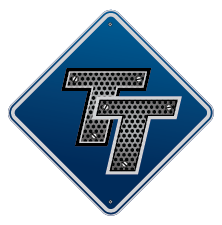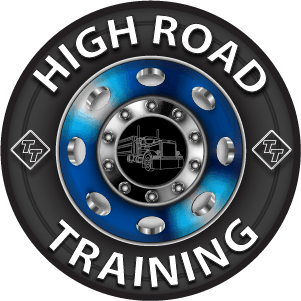Why Double-Clutch?
Topic 15380 | Page 1
Giovanni asks the age old question:
Could someone clarify this for me: Is it necessary to double clutch in a car and not in a truck, and if that is the case, why is that?
Actually, Giovanni, it's the other way around. The thing that allows small cars to shift without double clutch are gears in the transmission called "synchromesh". When you shift, the synchromesh helps the gears change speed inside the gearbox, so all you do is take pressure off the gears with the clutch, and throw the gearshift into the next gear, up or down.
In large trucks the gears are larger/ heavier, to handle all the extra power needed. Synchromesh gears would grind away to nothing in no time, and professional drivers (compared to the general public and their itty bitty 4 wheelers) can handle the extra work.
Glide shifting will actually work in any manual transmission, big truck or Dodge Neon.
Thank you for mentioning you are in Canada. Down south here, I believe every state requires double clutch shifting for road tests, though you can glide along once you pass the test.
Double Clutch:
To engage and then disengage the clutch twice for every gear change.
When double clutching you will push in the clutch, take the gearshift out of gear, release the clutch, press the clutch in again, shift the gearshift into the next gear, then release the clutch.
This is done on standard transmissions which do not have synchronizers in them, like those found in almost all Class A trucks.

Double clutching is not necessary in a vehicle with a synchronized transmission. Most modern manual transmission passenger cars are synchronized. There are many arguments on whether double clutching is good and floating gears is bad and they argue both ways on both topics. I learned many years ago on an old Willy's Jeep that if you choose the right gear at the right speed and RPM you don't need to use the clutch. I always assumed if the shift felt smooth that nothing was being damaged. Now why truck transmissions are not synchronized I do not know. I'm guessing longer life or heavier duty without synchronizers.
https://en.wikipedia.org/wiki/Double_clutch_(technique)
Floating Gears:
An expression used to describe someone who is shifting gears without using the clutch at all. Drivers are taught to "Double Clutch" or press and release the clutch twice for each gear shift. If you're floating gears it means you're simply shifting without using the clutch at all.
Double Clutch:
To engage and then disengage the clutch twice for every gear change.
When double clutching you will push in the clutch, take the gearshift out of gear, release the clutch, press the clutch in again, shift the gearshift into the next gear, then release the clutch.
This is done on standard transmissions which do not have synchronizers in them, like those found in almost all Class A trucks.
Double Clutching:
To engage and then disengage the clutch twice for every gear change.
When double clutching you will push in the clutch, take the gearshift out of gear, release the clutch, press the clutch in again, shift the gearshift into the next gear, then release the clutch.
This is done on standard transmissions which do not have synchronizers in them, like those found in almost all Class A trucks.
OOS:
When a violation by either a driver or company is confirmed, an out-of-service order removes either the driver or the vehicle from the roadway until the violation is corrected.
New Reply:
New! Check out our help videos for a better understanding of our forum features

















Preview:








 TT On Facebook
TT On Facebook
Hello,
For 3 years now I have had my CDL and have been driving tractor-trailers, mostly pulling bulk hopper trailers and pneumatics.
My mother-in-law recently gave us her old 2005 Dodge Neon SX 2.0 as a free second car. This is the first car I have ever driven with a standard transmission – I have only driven trucks with standard transmissions, not cars. All the cars I’ve ever owned have been automatics.
I seem to be able to shift this car fine without double-clutching just like when I drove truck. In truck driving school we were taught to “float” the gears, and the instructors tried hard to break any double clutching habits of students. (There’s no requirement to double clutch on a road test here in Canada.) My wife and my mother, on the other hand, double clutch like it is a life or death necessity.
Could someone clarify this for me: Is it necessary to double clutch in a car and not in a truck, and if that is the case, why is that?
CDL:
Commercial Driver's License (CDL)
A CDL is required to drive any of the following vehicles:
Double Clutch:
To engage and then disengage the clutch twice for every gear change.
When double clutching you will push in the clutch, take the gearshift out of gear, release the clutch, press the clutch in again, shift the gearshift into the next gear, then release the clutch.
This is done on standard transmissions which do not have synchronizers in them, like those found in almost all Class A trucks.
Double Clutching:
To engage and then disengage the clutch twice for every gear change.
When double clutching you will push in the clutch, take the gearshift out of gear, release the clutch, press the clutch in again, shift the gearshift into the next gear, then release the clutch.
This is done on standard transmissions which do not have synchronizers in them, like those found in almost all Class A trucks.